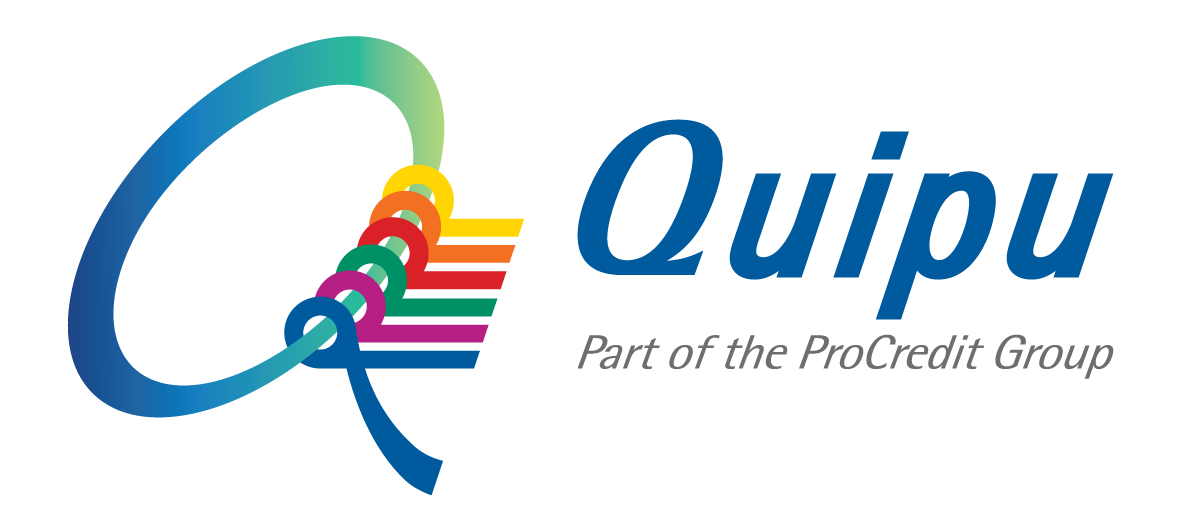
October 19, 2022
The cashless society and e-commerce – are we there yet?
The Western Balkans Digital Summit which took place in Prishtina in September 2022 gave us the opportunity to take a step back and see in perspective what we’ve done over the past years, especially with the fast pace dictated by the 2020 lockdowns worldwide. Eugenio Marengo, the Global Head of Quipu Processing Centre joined other speakers in the industry in the ProCredit Bank-supported panel, addressing today’s Digital Economy – a Cashless Society and E-commerce.
While discussions got heated over the actual possibility of going completely cashless, we found ourselves somewhere in the middle, knowing we thoroughly work for making funds and payments available digitally to all, regardless of where they are, while also keeping a realistic stand next to our end-users and bank customers who still need to facilitate the management and usage of cash in economies which are not yet fully prepared to go 100% digital.

So, do we have a cashless society today?
We’ve become highly accustomed in the past year to the word hybrid, even if we like it or not, and we are right using it in the case of this question right here – we are on the path towards a cashless society, but we are not fully there. And operating 100% cashless might still not be a thing in the near future.
With this context, at Quipu and in the region, we have been very busy over the last 3 years going full speed to implement payment solutions relevant to our clients the banks, and their clients, private individuals, and businesses.
We have already established methods like contactless cards in all countries in the region, but we have had a few years of premiers launching many firsts like Apple and Google pay and we continue these implementations in the rest of the countries as standards for our bank’s clients. We have definitely seen an increase in the usage of these methods if we look at application downloads and POS terminals statistics.
But we have to touch here some of the tools which are maybe not at first thought come into mind when thinking of a cashless society, but which help us and our client banks in the process – for example, making highly available cash deposits ATMs. It may sound counterintuitive to the cashless society, but we are doing just that – facilitating the using of cash, using bank accounts and digital payments with increased security of funds and with a lot more versatile and extended usage of funds.
Also, of course, through the digital processes set in place and understanding the contexts of countries where we operate, we also facilitate cash withdrawals without cards at our ATMs. Again, might sound strange to mention this on this topic, but having clients know they can access their funds at any time without having to use their physical plastic card, but only their smartphone, we see it actually encourages the usage of digital banking tools because we recognize a need, and we offer a solution for only those limited situation where cash is still needed.
What are the factors that encourage or block the adoption?
How much we truly operate without cash and make use of the card, contactless and online payments differ from country to country, region to region, even inside one country, and individual by individual, with high impact of one’s location, age group, exposure to digitalization in adopting a cashless behavior.
Dynamic economies are driving the cashless society and e-commerce development, with young people as early adopters of new technology embracing an easier reshaped future. Requests for new, modern, and practical payment methods are spiking as a means to increase one’s quality of life, the dynamics, and the safety people need in order to develop themselves and their communities.
The path toward implementing and offering clients and merchants alternative payment methods started in Quipu alongside our partner banks a long time ago, from contactless payments spreading further to mobile phones and wearables payments, NFC, Google, and Apple Pay payments, and in some of the banks with Garmin payments. This process was well adopted and implemented internationally, but we cannot ignore the speeding of the process dictated by the pandemic, which changed the game significantly and permanently for all of us. This, of course, was not only touching cashless and e-commerce, but in our case, we see the pandemic habits are here to stay – people prefer to make contactless payments and especially with their phones and smartwatches, people prefer in bigger numbers more and more to buy online and choose to pay online rather than cash at the moment of receiving their goods.
Of course, we also know that not 100% of the population has a bank account or a card, consequently, they do not have a contactless payment possibility and we will still have that for a while – from certain age groups to certain economic challenged regions, some of the people still rely heavily on cash and in a lot of cases, this restricts access to goods and other services in a way that one would hope to overcome soon. But this is also an economic and social matter that we, as technology providers, cannot address directly. We can only be here and support with technology and innovation the access to funds and access to bigger markets for bank clients and for merchants.
This said, when considering what solutions we can and should offer to support the cashless society and e-commerce, we keep in mind our three beneficiary categories which, while having a similar objective, have different technological needs and approaches towards it.
Read more about the three perspectives we are considering and how the ecosystem delivers and deploys security measures so that we can all safely, confidently, and openly embrace the cashless society.

